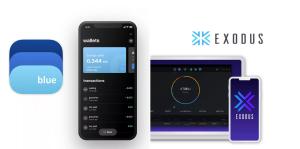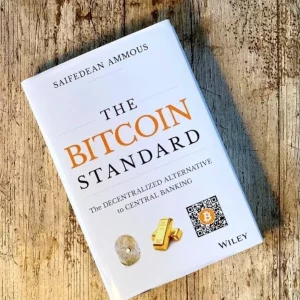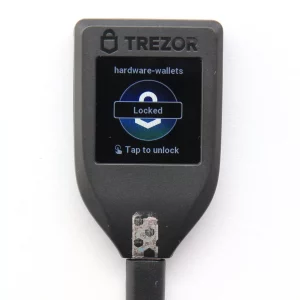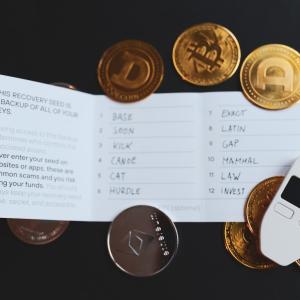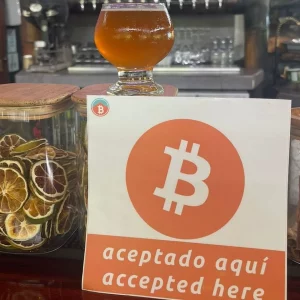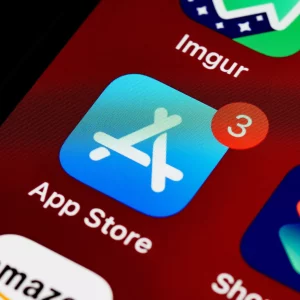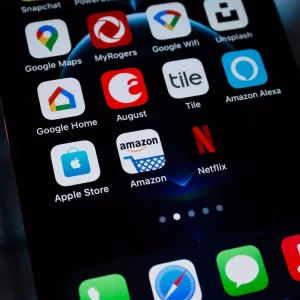For beginners stepping into the exciting world of Bitcoin and the Lightning Network, choosing the right wallet can feel daunting. Two popular options vying for your attention are Muun and Wallet of Satoshi (WoS). While both cater to users seeking a simplified approach to managing their funds, they differ in several aspects, from security measures to available features. Let us compare them for you to understand which might be the better fit for your needs.
User Experience
Both Muun and Wallet of Satoshi are Bitcoin-only wallets that prioritize user experience. Muun boasts a sleek, minimalist design, perfect for beginners who value simplicity. Wallet of Satoshi follows suit with an intuitive interface that streamlines the process of sending and receiving Bitcoin. WoS takes it a step further by integrating with BTC Map to help locate nearby Bitcoin-friendly merchants and ATMs.
Muun positions itself as an ideal starting point for individuals new to the Bitcoin and Lightning Network scene. It is available on both Android and iOS platforms. With Lightning Network integration, you can enjoy faster and cheaper transactions, a feature particularly appealing to those seeking efficiency in their Bitcoin transactions. However, Muun’s simplicity comes at a cost of limited features. While it excels in core functionalities, advanced users may find its offerings lacking.
Similarly, Wallet of Satoshi offers emphasizes ease of use and accessibility. The wallet caters to beginners looking for a hassle-free Bitcoin transaction experience. Through Lightning Network channels, users can execute near-instantaneous transfers with minimal fees, simplifying the process of sending and receiving Bitcoin. Integration with MoonPay facilitates buying and selling of Bitcoin directly within the app. However, you cannot buy or sell Bitcoin using Muun wallet.
While both Muun and Wallet of Satoshi handle Bitcoin addresses, Lightning invoices, and QR codes, Wallet of Satoshi offers the additional functionality of supporting Lightning addresses directly. Moreover, it supports Bolt Cards and LNURL payments within its Point of Sale.
The Wallet of Satoshi is available in various languages such as English, Italian, Dutch, French, Spanish, Portuguese, Polish, Vietnamese, Bahasa Melayu, Kiswahili, and more. In contrast, the Muun wallet is limited to English and Spanish.
Read also Muun Wallet Review
Security
Muun uses a unique security approach with its 2-of-2 multi-signature system, which requires two keys for fund transactions. This setup offers an extra layer of protection compared to traditional single-key wallets. Instead of the common seed phrase method for backup and recovery, Muun utilizes email and an Emergency Kit, diverging from the norm.
However, one potential drawback of the Muun wallet is its non-standard backup method. Rather than using a standard seed phrase, users are required to save a recovery PDF. This could pose a security risk as it may not be as convenient to store and recover the backup PDF compared to a seed phrase that can be easily written down or memorized.
Unlike WoS, Muun wallet is a custodial wallet, meaning you have full control of your private keys and funds. The Wallet of Satoshi operates as a custodial wallet, which may be seen as a drawback for users concerned about security and self-custody. This custodial model offers convenience but requires entrusting your Bitcoin to the wallet, unlike Muun’s self-custodial approach. For larger sums, opting for a self-custody wallet, or even better, a hardware wallet, might provide enhanced security.
Muun operates as an open-source wallet, enabling both the community and advanced users to scrutinize and audit its source code. In contrast, Wallet of Satoshi does not follow an open-source model.
Read also Wallet of Satoshi Review
Lightning Network
Both wallets leverage the Lightning Network’s benefits of faster and cheaper transactions. However, Muun requires users to manage their on-chain and Lightning Network balances separately. Wallet of Satoshi offers a single balance view for both.
Muun stores all your funds on-chain and handles Lightning channel management for you using submarine swaps. Submarine swaps in Muun Wallet offer a convenient method for transferring funds between the Lightning Network and the Bitcoin blockchain. This streamlines the process, particularly for newcomers, by removing the necessity for users to comprehend and oversee channel and liquidity management. However, they entail transaction fees on both networks and possible delays during peak traffic periods. Furthermore, users need to weigh privacy concerns and their dependence on third-party services for channel management.
Similarly, unlike native Lightning non-custodial wallets such as Phoenix that require configuration and the opening of channels, Wallet of Satoshi eliminates these complexities. As a custodial wallet, it makes it easier for you to send and receive Lightning payments without the need for any node setup, channel or liquidity management. Notably, WoS does not use submarine swaps for Lightning payments. When sending by Lightning there will never be any onchain transactions involved. Since it is is a custodial service so the user does not need to manage any channels. They manage several large well connected nodes on behalf of their users to ensure the best possible payment reliability.
Advanced Features
Despite their ease of use, both wallets have limited advanced features which might be a put off to some advanced users. However, when comparing Muun and Wallet of Satoshi, their unique functionalities and capabilities provide users with diverse options for managing their Bitcoin transactions.
Muun wallet supports Taproot, a feature that reduces transaction costs and enhances transaction privacy by making them more indistinguishable and less traceable within the Bitcoin protocol. Additionally, Muun supports SegWit, a Bitcoin address that allows more transactions to be included in each block and thus increasing network capacity. An upcoming feature will enable you to lock your wallet if your phone is stolen until you acquire a new phone and recover your funds.
Muun wallet integrates with Trezor hardware wallet, facilitating secure and straightforward Bitcoin transfers between Muun and Trezor. However, Muun does not currently support other advanced features such as CoinJoin, a method for anonymizing Bitcoin transactions, nor does it utilize the Tor network for online transaction anonymity. Furthermore, other advanced features such as multsig, LNURL, and anonymity options like PayJoin are not supported by Muun.
On the other hand, Wallet of Satoshi offers unique advanced features compared to Muun. These include integration with BTC Map allows users to conveniently locate nearby merchants and Bitcoin ATMs directly from the app, a Point of Sale (POS) feature, enabling merchants to accept Bitcoin payments via the Lightning Network at their shops or market stalls. The POS supports Lightning Network transactions, Bolt Cards, and LNURL, providing merchants with versatile payment options within the wallet.
Its buil-in exchange, in partnership with MoonPay, enable users to buy and sell Bitcoin through the Wallet of Satoshi. Wallet of Satoshi allows users to create a contact list of Lightning Addresses within the app, simplifying transactions with frequently used contacts. However, it lacks support for features such as multsig, LNURL, SegWit, PayJoin, CoinJoin, and Tor.
Wallet of Satoshi Fees vs Muun Wallet Fees
Muun and Wallet of Satoshi employ different fee structures and methodologies for determining transaction fees. Muun utilizes a mempool-based estimator to suggest the most appropriate fee for transaction validation within a specified time frame, typically 30 minutes. This approach aims to prevent overpaying during low network congestion and underestimating fees during high congestion periods. Users have the flexibility to choose their desired confirmation duration, with options ranging from the default 30 minutes to longer durations, or they can manually input a specific duration. While Muun’s Lightning payments utilize zero-conf swaps, which may result in higher fees during blockchain congestion, Lightning Network transaction fees are generally minimal.
On the other hand, Wallet of Satoshi is free to use, but users should be aware of transaction fees associated with sending, buying, and selling Bitcoin through the wallet. These fees can vary based on factors such as network congestion. Additionally, for buying and selling Bitcoin, additional fees apply through MoonPay, which can vary depending on the transaction amount. They also don’t charge any fees for Lightning payments, though there may be some small routing fees charged by other nodes who help route the transaction.
In summary, Muun’s fee structure is dynamic, based on real-time mempool data, while Wallet of Satoshi’s fees are determined by factors like network congestion and may include additional fees for buying and selling Bitcoin through MoonPay.
Read also: Muun vs Phonenix
Supported Countries
Muun wallet offers global accessibility, while Wallet of Satoshi is also accessible in many countries worldwide. However, certain countries may not support the app due to regulatory constraints or other reasons. Notably, as of 2023, Wallet of Satoshi ceased to be available in the US. It’s important to review their app store listing to determine if the app is downloadable in your country. Both wallets support almost all currencies around the world. Therefore, you can select your national currency as the main currency for your balance so that you know the value of bitcoin into your local currency.
Muun Wallet vs Wallet of Satoshi: Summary
Here’s a table highlighting the main key differences between Muun Wallet and Wallet of Satoshi:
| Feature | Muun Wallet | Wallet of Satoshi |
|---|---|---|
| Design | Sleek, minimalist design | Intuitive interface |
| Platform Availability | Android and iOS | Android and iOS |
| Bitcoin Only | Yes | Yes |
| Lightning Network Integration | Yes (via submarine swaps) | Yes (native Lightning) |
| Buying/Selling Bitcoin | Not available within the app | Available within the app through MoonPay |
| Language Support | Limited to English and Spanish | English, Italian, Dutch, French, Spanish, Portuguese, Polish, Vietnamese, Bahasa Melayu, Kiswahili, and more |
| Lightning Address Support | No | Yes |
| Point of Sale (POS) Feature | Not available | Available |
| Open Source Model | Yes | No |
| Custodial Model | Self-custodial | Self-custodial |
| Supported Countries | Global | Many countries worldwide (excluding US as of 2023) |
| Year Launched | 2018 | 2018 |
Muun Wallet vs Wallet of Satoshi: Our Verdict
Muun shines for beginners seeking a user-friendly, secure self-custodial wallet for basic Bitcoin and Lightning Network transactions. On the other hand, Wallet of Satoshi excels for those prioritizing convenience, featuring built-in buy/sell options, BTC Map, and a POS system. However, its custodial nature and limited availability in certain regions, such as the US, are drawbacks.
Ultimately, the best wallet hinges on your priorities. If user-friendliness, open source, and self-custody are paramount, Muun is a strong contender. If you prioritize a one-stop shop for managing, buying, selling, and receiving Bitcoin with native Lightning Network integration regardless of custodial nature, Wallet of Satoshi is worth considering.
In conclusion, both Muun and Wallet of Satoshi cater to different segments of the user base, offering unique benefits and trade-offs. Whether you’re a novice exploring Bitcoin transactions or an experienced user seeking convenience, there’s a Lightning Network wallet tailored to your needs. Choose wisely and remember, for significant amounts, a hardware wallet might be a wise security measure.






